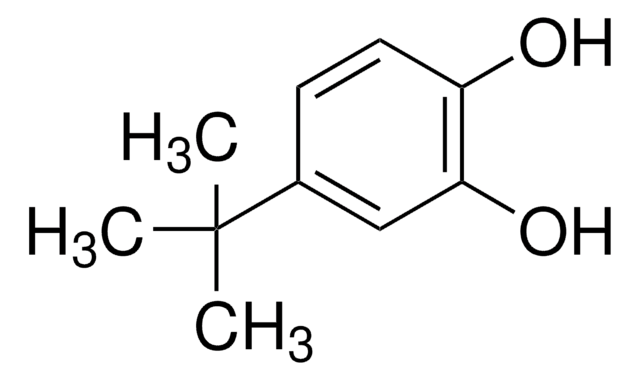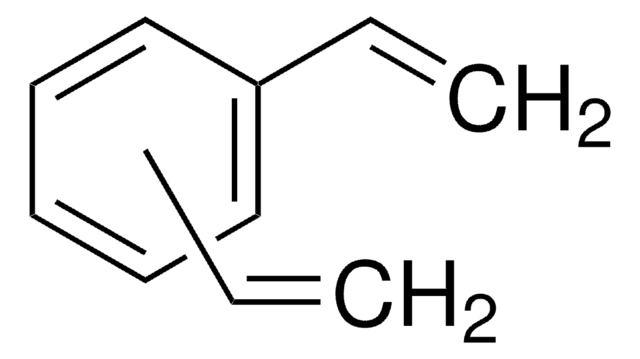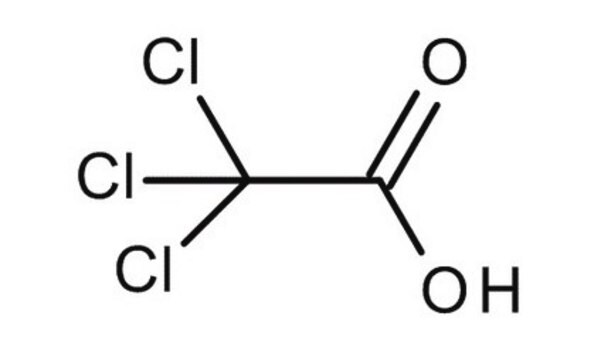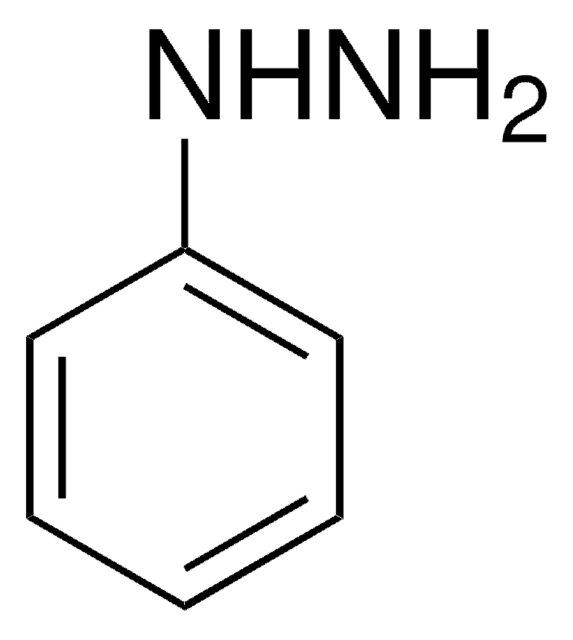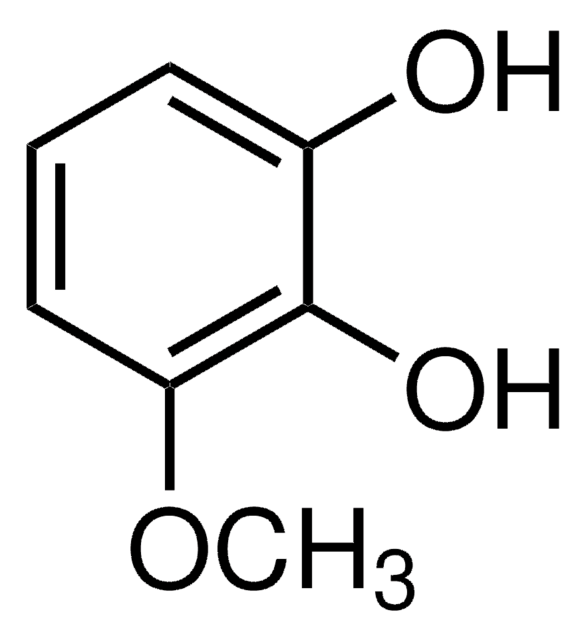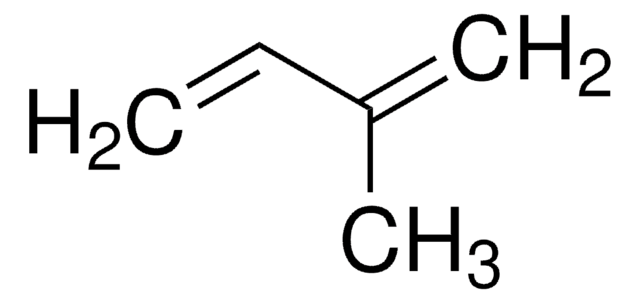19671
4-tert-Butylcatechol
≥99.0%
동의어(들):
4-(1,1-Dimethylethyl)benzene-1,2-diol, 4-tert-Butylcatechin, 4-tert-Butylpyrocatechol, 4-TBC, p-tert-Butylcatechol
로그인조직 및 계약 가격 보기
모든 사진(1)
About This Item
Linear Formula:
(CH3)3CC6H3-1,2-(OH)2
CAS Number:
Molecular Weight:
166.22
Beilstein:
2043335
EC Number:
MDL number:
UNSPSC 코드:
12352100
PubChem Substance ID:
NACRES:
NA.22
추천 제품
일반 설명
4-tert-Butylcatechol,in the presence of O2 catalyzed by tyrosinase, yields 4-tert-butyl-o-benzoquinone. Electrochemical oxidation of 4-tert-Butylcatechol in the presence of 4-hydroxycoumarin as nucleophile has been studied using cyclic voltammetry and controlled-potential coulometry. It undergoes electrochemical trimerization via anodic oxidation and mechanism of trimerization has been studied using cyclic voltammetry and controlled-potential coulometry.
애플리케이션
- Antioxidant source for radical reactions: Research identified 4-tert-Butylcatechol as a viable source of hydrogen atoms in radical reactions, specifically in deiodination processes, expanding its utility in synthetic organic chemistry (Povie et al., 2016).
신호어
Danger
유해 및 위험 성명서
Hazard Classifications
Acute Tox. 4 Dermal - Acute Tox. 4 Oral - Aquatic Acute 1 - Aquatic Chronic 1 - Eye Dam. 1 - Skin Corr. 1B - Skin Sens. 1
Storage Class Code
8A - Combustible corrosive hazardous materials
WGK
WGK 3
Flash Point (°F)
235.4 °F - closed cup
Flash Point (°C)
113 °C - closed cup
개인 보호 장비
Eyeshields, Faceshields, Gloves, type P3 (EN 143) respirator cartridges
이미 열람한 고객
Electrochemical study of 3, 4-dihydroxybenzoic acid and 4-tert-butylcatechol in the presence of 4-hydroxycoumarin application to the electro-organic synthesis of coumestan derivatives.
Golabi SM and Nematollahi D.
Journal of Electroanalytical Chemistry, 430(1), 141-146 (1997)
Mechanistic study of electrochemical oxidation of 4-tert-butylcatechol: A facile electrochemical method for the synthesis of new trimer of 4-tert-butylcatechol.
Nematollahi D, et al.
Electrochimica Acta, 49(15), 2495-2502 (2004)
J N Rodriguez-López et al.
Analytical biochemistry, 202(2), 356-360 (1992-05-01)
A procedure for calibrating a Clark-type oxygen electrode is described. This method is based on the oxidation of 4-tert-butylcatechol (TBC) by O2 catalyzed by tyrosinase, to yield 4-tert-butyl-o-benzoquinone (TBCQ). This reaction consumes known amounts of oxygen in accordance with the
Keiko Minamoto et al.
Contact dermatitis, 46(6), 339-347 (2002-08-23)
Fibreglass-reinforced plastics (FRP) factory workers are at high risk of developing occupational dermatoses because of their exposure to many chemicals used in the manufacture of plastics as well as to glass fibre or dust. Patch tests were carried out on
T Kawashima et al.
The Journal of investigative dermatology, 82(1), 53-56 (1984-01-01)
4-Tertiary butyl catechol (TBC) causes depigmentation in humans and animals and stimulates formation of pheomelanosomes. In this study, we investigated the effects of noncytotoxic doses of TBC on glutathione S-transferase (GST) activity in the skin of Uscd strain mice and
자사의 과학자팀은 생명 과학, 재료 과학, 화학 합성, 크로마토그래피, 분석 및 기타 많은 영역을 포함한 모든 과학 분야에 경험이 있습니다..
고객지원팀으로 연락바랍니다.